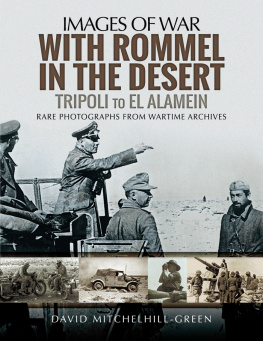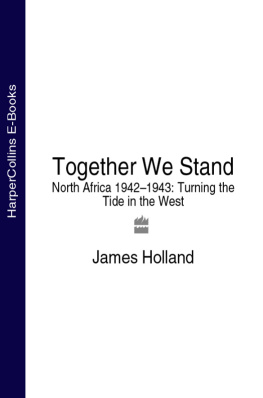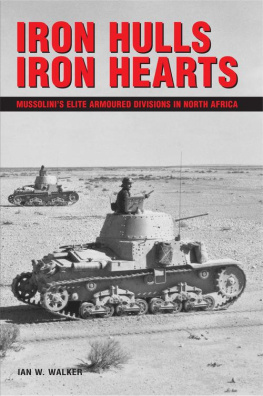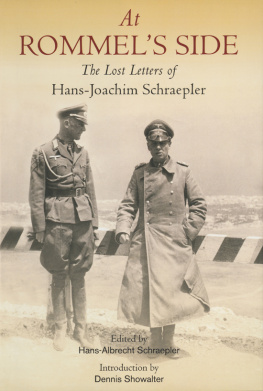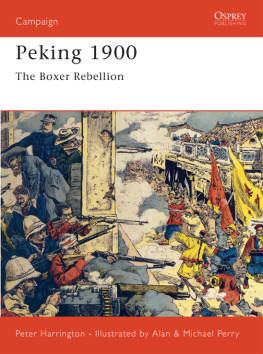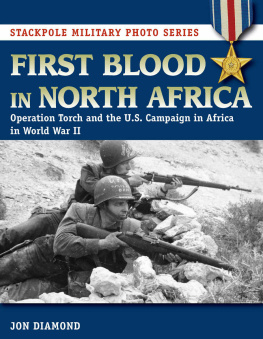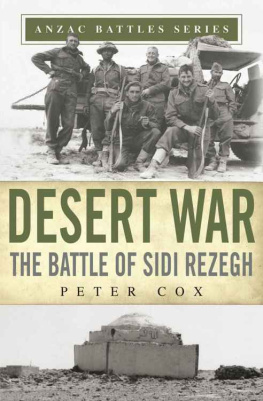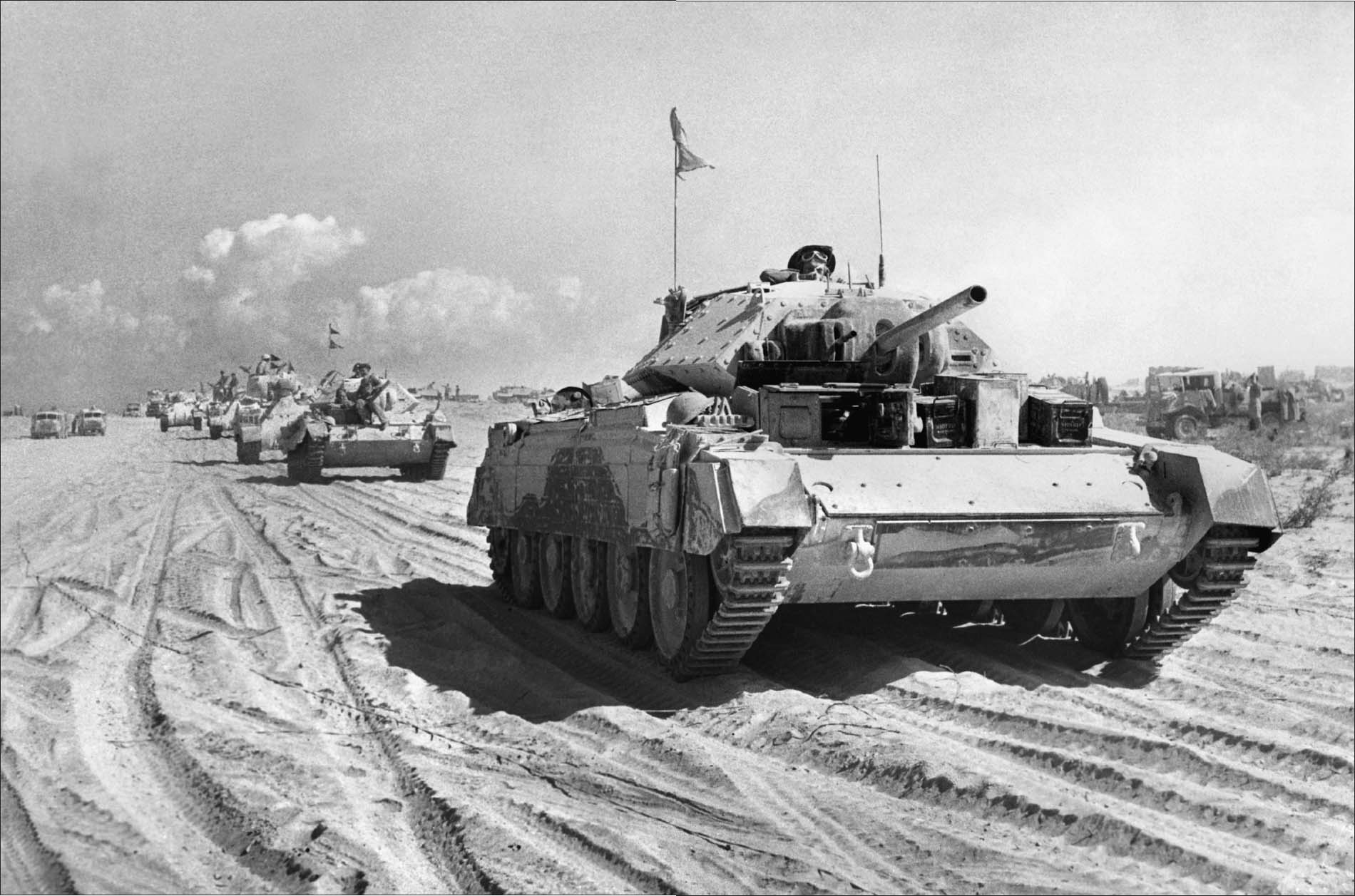Pagebreaks of the print version


THE DESERT WAR
THE CAMPAIGN IN NORTH AFRICA 194043
THEN AND NOW
Of all the theatres of operations, it was probably in North Africa that the war took on its most advanced form. The protagonists on both sides were fully motorised formations, for whose employment the flat and obstruction-free desert offered hitherto undreamed-of possibilites. It was the only theatre where the principles of motorised and tank warfare, as they had been taught theoretically before the war, could be applied to the full.
ERWIN ROMMEL, 1942
THE DESERT WAR
THE CAMPAIGN IN NORTH AFRICA 1940-43
THEN AND NOW
Credits
ISBN: 978 1 870067 77 5
eISBN: 978 1 399076 63 0
First published in Great Britain in 2012 by After the Battle
Published in 2021 by After the Battle,
An imprint of Pen & Sword Books Limited
Yorkshire Philadelphia
All rights reserved. No part of this book may be reproduced or transmitted in any form or by any means, electronic or mechanical including photocopying, recording or by any information storage and retrieval system, without permission from the Publisher in writing.
For a complete list of Pen & Sword titles please contact
PEN & SWORD BOOKS LIMITED
47 Church Street, Barnsley, South Yorkshire S70 2AS,
United Kingdom
E-mail: enquiries@pen-and-sword.co.uk
Website: www.pen-and-sword.co.uk
Or PEN AND SWORD BOOKS
1950 Lawrence Rd, Havertown, PA 19083
USAE-mail: Uspen-and-sword@casematepublishers.com
Website: www.penandswordbooks.com
Designed by Jean Paul Pallud.
FRONT COVER
September 29, 1942. A soldier inspects the grave of a German tank crew buried near the wreck of a disabled PzKpfw III.
REAR COVER
A field cemetery at Sidi Rezegh where fierce battles raged for days in November 1941 (see page 199). The old tomb of a holy man still stands, exactly the same as it did seven decades ago.
ENDPAPERS
Front : The first shots of the desert war were fired when armoured cars from the 11th Hussars cut through the wire fence built by the Italians along the frontier and advanced into Libya on the night of June 11/12, 1940 (see pages 34 and 35).
Rear: On May 20, 1943, a huge victory parade was held in Tunis, and for over two hours 26,000 troops marched past with tanks, armoured cars and guns. The Royal Air Force then performed a massive flypast with two hundred bombers and fighters (see page 550).
ACKNOWLEDGEMENTS
The author is indebted to many individuals for their assistance and especially to the following: Allan Adams, Sergio Adreanelli, Rudy dAngelo, Peter Arnold, David Baker, Robin Brooks, Derek Butler (Commonwealth War Graves Commission), Michael Cooke, Peter Cornwell, Moftah Elbawendi, David Fletcher, Solaiman Gawda, Chris Goss, Steve Hamilton, Garrie Hutchinson, Preston Isaac, Karel Margry, Dal McGuirk, Giuseppe Musmarra, Michael Ockenden, Thomas Pallud, Bernd Peitz, Gail Ramsey, Jean Louis Roba, Peter Sanders, Peter Schenk, Vern Simpson, Giorgio Spazzapan, Daniel Taylor, Mohammed Toumy, Alan Waters, Libro di Zinno.
EDITORIAL NOTE
Many books have been consulted for eyewitness extracts, photographs and maps and the Editor-in-Chief gratefully acknowledges the following publishers and apologises for any errors and omissions.
The Rats of Tobruk , Captain John Devine, Halstead Press, 1943.
African Trilogy , Alan Moorehead, Hamish Hamilton, 1944.
I was an Eighth Army soldier , Robert Crawford, Victor Gollancz, 1944.
The Tiger kills , published by His Majestys Stationery Office, 1944.
Alamein to Zem Zem , Keith Douglas, Editions Poetry London, 1946.
El Alamein to the River Sangro , Field-Marshal the Viscount Montgomery of Alamein, Hutchinson & Co, 1949.
The Rommel Papers , edited by Sir Basil Liddell Hart, Collins, 1953.
History of the Second World War, The Mediterranean and Middle East, volumes I, II, III and IV , Major-General Ian Playfair, Her Majestys Stationery Office, 1954 through 1966.
Geoffrey Keyes of the Rommel raid , Elizabeth Keyes, George Newnes, 1956.
Northwest Africa: Seizing the Initiative in the West, George F. Howe, US Army in World War II, 1957.
The Sidi Rezegh battles , John Agar-Hamilton and L. C. F. Turner, Oxford University Press, 1957.
Alamein and the desert war , edited by Derek Jewell, Sphere Books, 1967.
Desert Rats at war , George Forty, Purnell Book Services, 1975.
Mit Rommel in der Wste , Volkmar Khn, Motorbuch Verlag, 1975.
Rommel , Richard D. Law & Craig W. Luther, James Bender Publishing, 1980.
The Private Afrikakorps Photograph, collection of Fritz Bayerlein , Patricia Spayd and Fritz Dittmar-Bayerlein, Schiffer Military History, 2004.
Afrikakorps in Colour, Bernd Peitz, Schiffer Military History, 2005.
Tre Anni di Guerra in Africa Settentrionale , Gabriele Angelini and Andrea Santangelo, Angelini Editore, 2007.
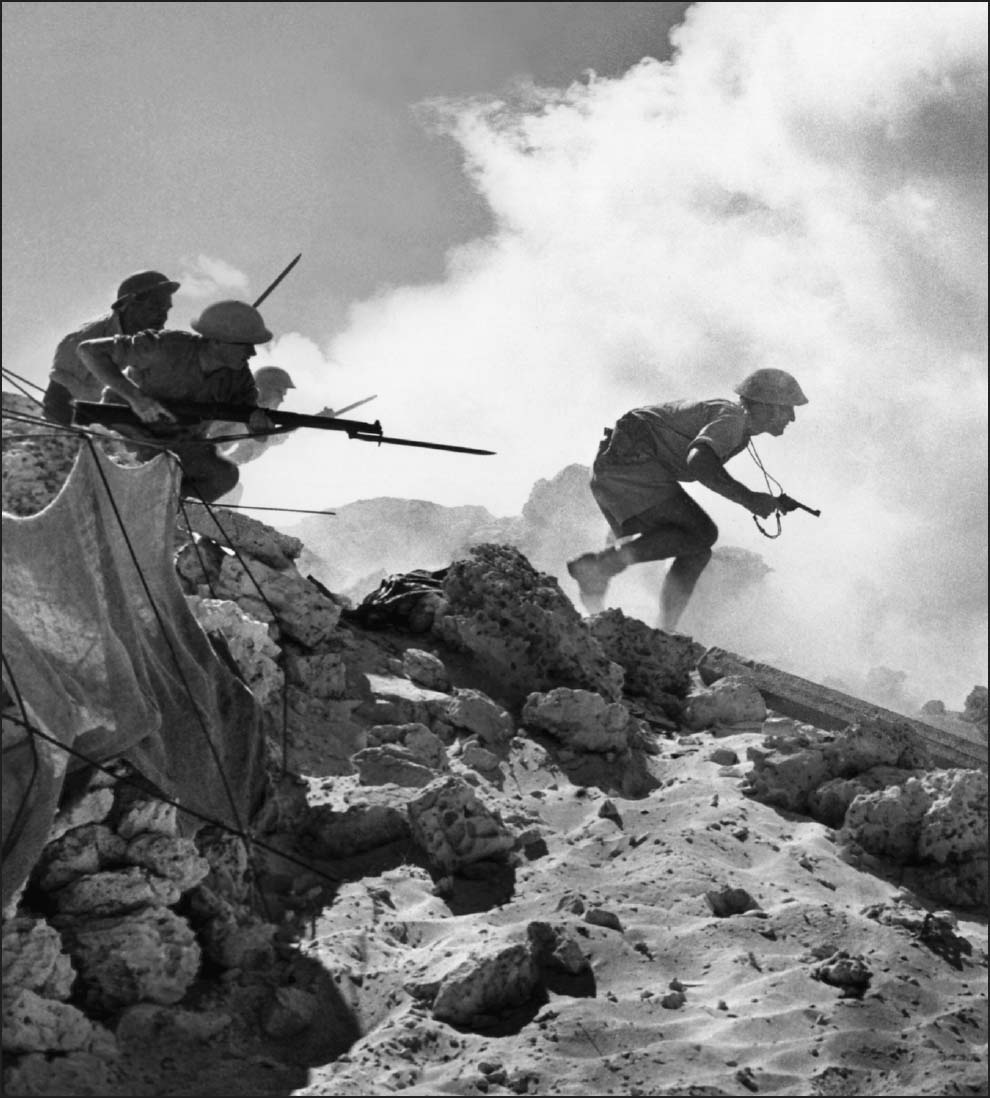
The campaign in North Africa was not decided nor ruled by any clear strategical aim. The introduction of German forces into this theatre was decided simply to prop up their Italian ally after the dramatic defeat of their 10a Armata in Cyrenaica at the beginning of 1941. However, the risk of letting the British sweep the Italians from their colony in North Africa was too serious for Hitler to ignore as it might cause the political collapse of Mussolini and Italy quitting war, but the German High Command was then totally focussed on the forthcoming attack on the Soviet Union and they ruled that the North African operation would have to be of secondary importance. Also, although it has been claimed that it was part of a grand pincer movement whereby the Afrikakorps would push several thousand kilometres around the Mediterranean, across the Middle East and link up with the German armies in Russia, the German High Command never conceived such a plan. It would have hugely exceeded Axis capabilities, Germany and Italy having neither the armies, the navy nor the air forces necessary to capture and control such a huge territory. On the other hand, British interests in North Africa related to strategic freedom of movement. When the Americans became involved in the European theatre, they pressed for an invasion of Europe but finally agreed in July 1942 to an operation in North Africa when the Soviet Union urged its Western Allies to attack German forces wherever possible to relieve pressure from the Eastern Front. This dramatic photograph was set up by Sergeant Len Chetwyn to depict Australian infantry storming a strong point through a dense smoke screen in November 1942.
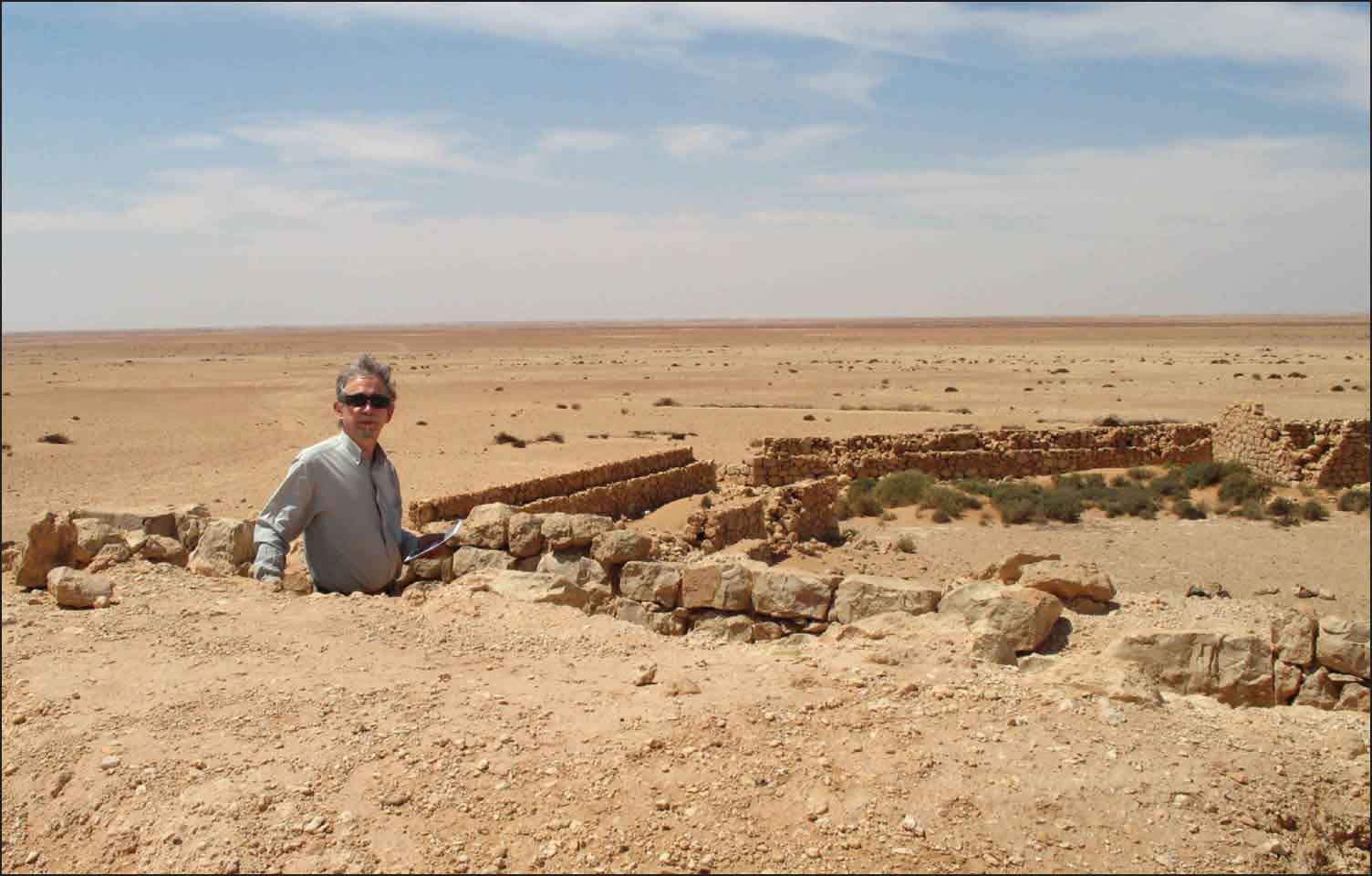
Jean Paul pictured at the old Turkish fort of Bir Hakeim. He had the entire place to himself in the windswept loneliness of the Libyan desert, standing on the exact spot where a German signalman had set up his radio in June 1942 (see page 289).


